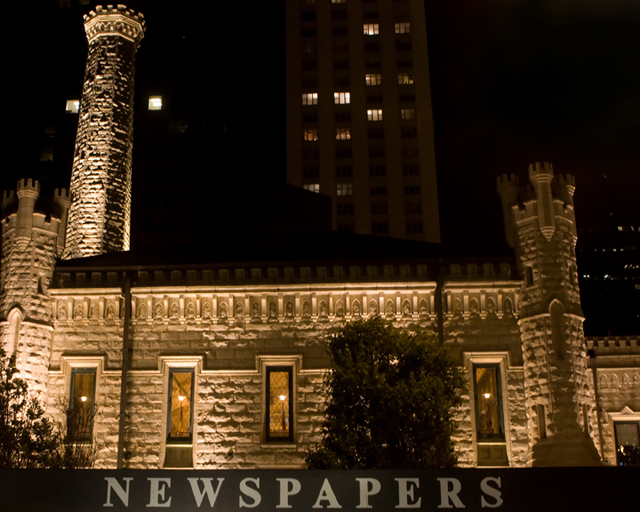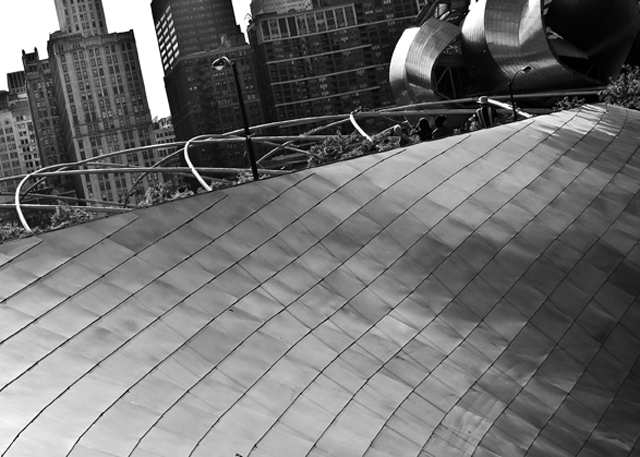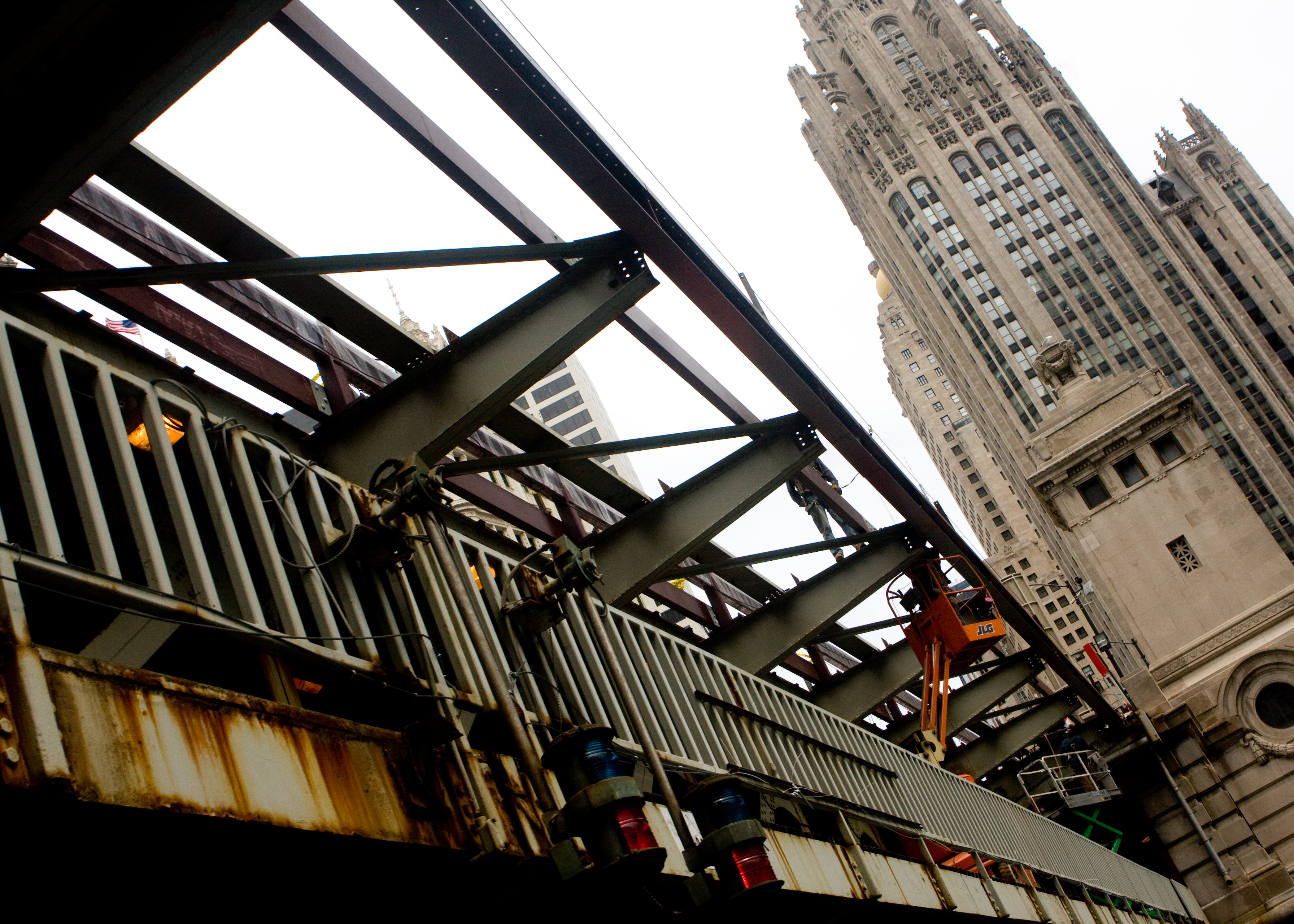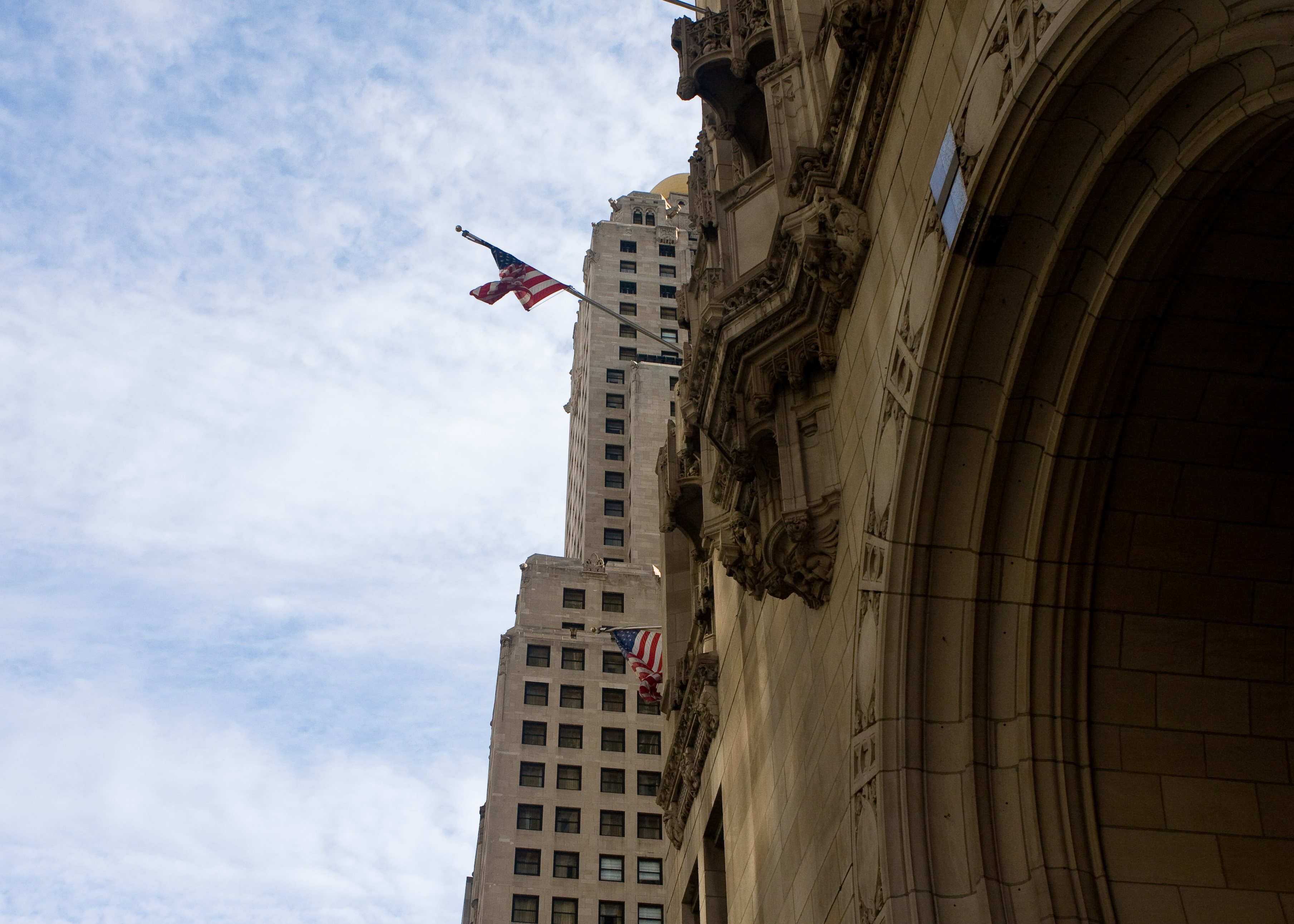I begin with a confession: I’m no expert on architecture. I have studied it only briefly while taking an advanced art-history class in high school. I was so inspired by the architecture I saw when visiting Chicago on a recent road trip with my sister, though, that I felt compelled to write about it.
In case you’re wondering, I did take a couple of pictures while in the city. (Actually I took more than a 150 shots in the city, so maybe that goes beyond what most people mean when they say “a couple.”) Even with all those pictures, I still don’t believe I did justice to the city’s architecture. Much of the charm of good architecture comes from a building’s pleasing relationships to its surrounding space, relationships that are best discovered by moving around and through that space. This kind of thing is hard to capture in a two-dimensional image.
Still, I’ll include some of my shots throughout this post to give you some context, and I hope, a faint impression of my admiration for the city. To see more of the pictures from my road trip, you can check out my road-trip flickr set.

I haven’t visited a city that has so much architectural variation, elegance, and inventiveness from one block to another. There are great buildings in almost every major city in the world, certainly. In Chicago, though, all you have to do is walk a few feet in one direction to discover more magnificent buildings derived from entirely different architectural styles. It’s astonishing.
Being astonished, I was curious to learn more about the men and women who commissioned the buildings I admired. After all, it seemed like a reasonable exchange for the visual splendor I was provided. How peculiar that those people, and the companies they represent, earned my interest without a single we-are-awesome billboard or a generic, corporate poster (the kind that is intended to inspire but destined to deflate).
By constructing buildings whose aesthetic appeal is hard to measure in terms of profitability, these architectural patrons subtly persuade me that they have good taste and care about more than just easy-to-measure metrics that affect profitability. In response, my admiration grows.

Do you think, oh diligent bean-counter, that this growth of admiration might increase the chances that I’ll do business with the company in question? I think so. That kind of influence is hard to measure, I will grant you that, but that doesn’t make it less valuable than the factors that are easier to track.
I’m not getting paid to write this post by the city of Chicago. Nor am I trying to gain favor with any architect friends or even with the world-famous Rod Blagojevich. I am writing out of admiration and a desire to share that admiration with you. That’s what happens when you do extraordinary things, when you aren’t being corporate: Others will speak fondly of you and the things you offer even without having strong incentives for doing so. But if everything you do is about only expanding the bottom line, then don’t expect others to talk about you unless you somehow affect their own bottom line.
For various reasons, people in Chicago chose to produce awe-inspiring buildings and civic spaces. Out of appreciation for their efforts, but without being prompted to do so, I wrote this post. If my words make you curious about Chicago, then maybe you’ll plan a visit in the near future. Maybe you’ll become more curious about the city, but you won’t go for another 10 years.
Perhaps you won’t ever visit, but you’ll mention the city in a positive way to someone else who will visit, in part because of your comments. There are lots of positive possibilities that could stem from an initial decision to build a magnificent building, many of them involve cold hard cash, but good luck measuring that stuff.

Now let’s get back to the architecture. Essentially, you can reduce even the most complex of buildings to an arrangement of simple shapes that are repeated or varied across an enclosed space, but this simplification fails to capture the magic of those special buildings that make us marvel.
In my mind, great architecture is a reminder from God of the potential greatness in each of us. Great buildings grab us by the lapels and dare us to believe that we too are like them, not cheap and disposable things as the sometimes petty and demoralizing moments in our lives might suggest. Rather, we are individuals with a potential to do substantial and resonating things.

Here’s another thing I admire about great architecture: The success of a building depends in part on how well it serves the needs of the people who use it. A building that prevents the workers it encloses from doing their jobs properly is not a building whose design is worth celebrating. The same is true about a house whose design is so chaotic and impractical that it incubates frustration in its inhabitants.
More so than other art forms, the architecture that seeks acclaim must balance the poetic ideals of its creator with the needs of the people for whom it was created. Architects who ignore these considerations will see their buildings scorned and eventually demolished. If you are a narcissist who cares only about your own magnificence, no matter how distasteful or harmful it may be to others, you will have a better chance of having your work canonized by producing vulgar paintings or pretentious films.

Chicago’s architecture helped to solidify my belief that the value of any art, whether architecture, painting, performance, sculpture, music or film is determined by how it affects other people. An artist can have the grandest ideas in the world about his art, but if his work doesn’t broadcast his ideas or his heart to others in some way, then his art is significant only in his mind.

That’s when I realized that the value of the exhibit was not in it’s technical accomplishment but in its ability to encourage playfulness and bring people together. Kind of neat. Here’s another example of that kind of thing: In the evenings at the beginning every hour, the water in the Buckingham Fountain, located in the heart of Chicago’s Millennium Park, becomes a colorful spectacle accompanied by music from the nearby speakers. (Chicago doesn’t charge you a dime to see this or its beautifully illuminated cityscape.)
I mentioned bean-counters in the beginning of this post, and now I’m going to use a bean to end this thing. (It’s my attempt to go organic. I care about the earth. I do.) Actually I’m talking about the Cloud Gate sculpture, also in Millennium Park, that bears a striking resemblance to a gigantic silver bean.

When I first heard that this was one of the most popular landmarks in the city, I concluded with dismay that this was another example of a modern trinket triumphing over a timeless masterpiece. Still, I was curious enough to pay “The Bean” a visit.
Then I understood: it was a gigantic bean-like sculpture that also happened to be highly reflective. That means all those who approach it will see curvy and sometimes distorted reflections of themselves. It’s sort of like taking those crazy mirrors in fun houses, making them a hundred times bigger, and turning the exhibit into a communal experience.
My former scorn now abolished, I could not resist the urge to set aside temporarily my sense of (pseudo) sophistication to join my fellow Bean enthusiasts in taking a picture of my reflection. And so, I was a little happier that day. Without worrying about how it will benefit you, dare to create something that has a similar effect on others, and you too can make the world less corporate.